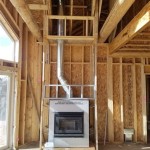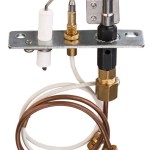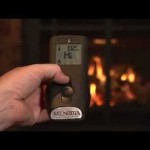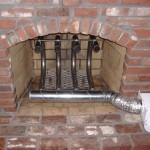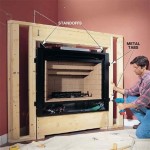Dimensions Of A Fireplace Mantel
The fireplace mantel serves as a focal point within a room, offering both aesthetic appeal and functional utility. Determining the appropriate dimensions for a fireplace mantel requires careful consideration of several factors, including the size of the fireplace opening, the overall scale of the room, and the desired style and proportions. Ignoring these considerations can result in a mantel that appears disproportionate or clashes with the existing architectural elements.
Accurate measurements and a clear understanding of standard dimensions contribute significantly to achieving a balanced and visually pleasing fireplace design. This article explores the key aspects of fireplace mantel dimensions, providing guidance on how to select the right size and shape to enhance the overall ambiance of a living space.
Height of the Mantel Above the Firebox
The height of the mantel above the firebox is a critical safety and aesthetic consideration. Building codes and manufacturer recommendations establish minimum clearances between the top of the firebox opening and the underside of the mantel. These clearances are designed to prevent the mantel from overheating and potentially catching fire. Typically, a minimum clearance of 12 inches is required for combustible mantels, though this distance can vary depending on the specific fireplace and mantel materials. It is crucial to consult local building codes and the fireplace manufacturer's specifications to ensure compliance.
Besides safety, the height of the mantel also impacts the visual balance of the fireplace. Too low, and the mantel may appear cramped or obstruct the view of the fire. Too high, and it can lose its visual connection to the firebox and feel detached from the overall fireplace design. A general guideline is to position the mantel at a height that feels comfortable and visually proportionate to the height of the fireplace opening. For standard fireplaces, this often translates to a mantel height between 48 and 54 inches above the floor. However, this is a starting point and should be adjusted based on the specific dimensions of the fireplace and the room.
Fireplace inserts, particularly those with a significant amount of exposed metal above the glass door, often require greater clearances than traditional open fireplaces. The heat radiating from these inserts can be substantial, and sufficient vertical space is necessary to protect combustible materials. Always adhere to the manufacturer's guidelines regarding mantel clearances for fireplace inserts.
Width of the Mantel Shelf
The width of the mantel shelf, also known as the mantel top or mantel cap, determines the amount of display space available. The shelf width should be proportionate to the overall size of the mantel and the fireplace. A shelf that is too narrow may look insignificant, while a shelf that is excessively wide can appear bulky and overwhelming.
A common rule of thumb is to have the mantel shelf extend at least 6 inches beyond the width of the firebox opening on each side. This provides a balanced visual frame around the firebox and creates ample space for displaying decorative items. However, the specific width should also take into account the overall width of the fireplace surround and the available wall space. In smaller rooms, a narrower mantel shelf might be more appropriate to avoid making the fireplace appear too dominant.
The depth of the mantel shelf is another important consideration. A deeper shelf provides more display space but can also protrude further into the room. A depth of 8 to 12 inches is generally sufficient for most decorative items, but this can be adjusted based on personal preference and the dimensions of the room. Remember to consider the visual impact of the shelf depth on the overall aesthetic of the fireplace. A very deep shelf can create a strong horizontal line that can affect the perceived proportions of the room.
Material choices also influence the perception of width and depth. A dark-colored or heavily textured mantel shelf will appear more prominent than a light-colored or smooth one. Consider how the material will interact with the overall design of the fireplace and the surrounding décor.
Overall Mantel Dimensions and Room Proportion
The overall dimensions of the fireplace mantel must harmonize with the size and proportion of the room. A large, elaborate mantel in a small room will overwhelm the space, while a small, understated mantel in a large room may appear insignificant. The fireplace should be a focal point but not dominate the entire room.
Consider the height of the ceiling when determining the overall height of the mantel. In rooms with high ceilings, a taller mantel can help balance the vertical space. Conversely, in rooms with low ceilings, a shorter mantel will prevent the room from feeling cramped.
The width of the mantel should also be proportionate to the width of the wall on which it is mounted. A mantel that extends almost the entire width of the wall can create a dramatic effect, while a narrower mantel can be used to define a smaller focal point. Consider the placement of other furniture and architectural elements in the room when determining the optimal width of the mantel.
Beyond the physical dimensions, consider the perceived weight and visual impact of the mantel. A mantel made of heavy materials, such as stone or solid wood, will appear more substantial than a mantel made of lighter materials, such as MDF or painted wood. The style of the mantel also influences its visual impact. A simple, minimalist mantel will blend seamlessly into the background, while an ornate, decorative mantel will draw more attention.
To achieve the desired aesthetic, it is often helpful to create visual mockups or use design software to experiment with different mantel dimensions and styles. This allows for a better understanding of how the mantel will interact with the existing architectural elements and décor of the room.
Leg Dimensions and Fireplace Surround Considerations
The legs of the mantel, if present, play a crucial role in defining its overall appearance and supporting its structure. The height of the legs should be proportionate to the overall height of the mantel and the fireplace opening. Legs that are too short may make the mantel appear squat, while legs that are too tall can create a sense of imbalance. Typically, the legs extend from the floor to just below the mantel shelf, creating a visual frame around the firebox.
The width of the legs can also influence the overall aesthetic of the mantel. Wider legs create a more substantial and traditional look, while narrower legs offer a more modern and streamlined appearance. The style of the legs should complement the overall design of the mantel and the fireplace surround. Consider the use of decorative elements, such as fluting, carvings, or moldings, to enhance the visual appeal of the legs.
The fireplace surround, which is the decorative facing around the firebox opening, also impacts the dimensions of the mantel. The mantel should be designed to integrate seamlessly with the surround, creating a cohesive and visually appealing fireplace design. The material and style of the surround should complement the material and style of the mantel.
When measuring for a mantel, it's essential to account for the thickness and projection of the fireplace surround. The mantel should be positioned in such a way that it does not obstruct the view of the surround or create a cluttered appearance. In some cases, the mantel may be designed to partially overlap the surround, creating a layered effect.
For fireplaces with existing surrounds, it may be necessary to customize the mantel to fit the specific dimensions and style of the surround. This can involve adjusting the width, height, and depth of the mantel to ensure a perfect fit. Consider consulting with a professional carpenter or fireplace installer to ensure that the mantel is properly installed and integrated with the existing surround.
Material Thickness and Structural Integrity
The thickness of the mantel material is a critical factor that affects both its aesthetic appearance and its structural integrity. The material thickness should be appropriate for the size and style of the mantel, as well as the weight of any items that will be displayed on the mantel shelf. A mantel made of thin material may look flimsy and be unable to support heavy objects, while a mantel made of excessively thick material can appear bulky and overwhelming.
The choice of material also influences the required thickness. Solid wood mantels typically require a greater thickness than mantels made of composite materials, such as MDF or plywood, to ensure adequate strength and stability. Stone mantels, due to their inherent weight and density, may require even greater thickness and specialized installation techniques.
Consider the span of the mantel shelf when determining the appropriate material thickness. A longer span will require a thicker material to prevent the shelf from sagging or deflecting under load. Reinforcements, such as metal supports or internal bracing, may be necessary for mantels with long spans or heavy loads.
The method of attachment also affects the required material thickness. Mantels that are securely anchored to the wall with screws or bolts can support heavier loads than mantels that are simply resting on the fireplace surround. Ensure that the attachment method is appropriate for the weight and size of the mantel.
When selecting a mantel material, consider its ability to withstand heat and moisture. Materials that are prone to warping or cracking when exposed to heat should be avoided. Sealants or finishes may be necessary to protect the mantel from moisture damage.

Mantel Dimensions Fireplacepro

Best Fireplace Mantel Proportions How Not To Muck It Up Laurel Home

Fireplace Mantel Worksheet How To Measure For A

Types Of Fireplaces And Mantels The Home Depot

Nicole Fireplace Mantel Siteworks Mantels

Danbury Wood Fireplace Mantel Standard Sizes Dimensions

Wood Fireplace Mantel Surround Custom Built To Any Size Solid Hardwood Israel

A Plus Inc Candler 36 Tall

Fireplace Dimensions Mantel Kits Fake

Bridget Fireplace Mantel Siteworks Mantels
Related Posts



